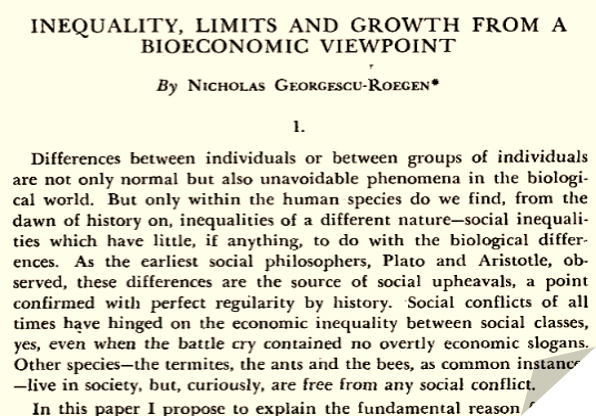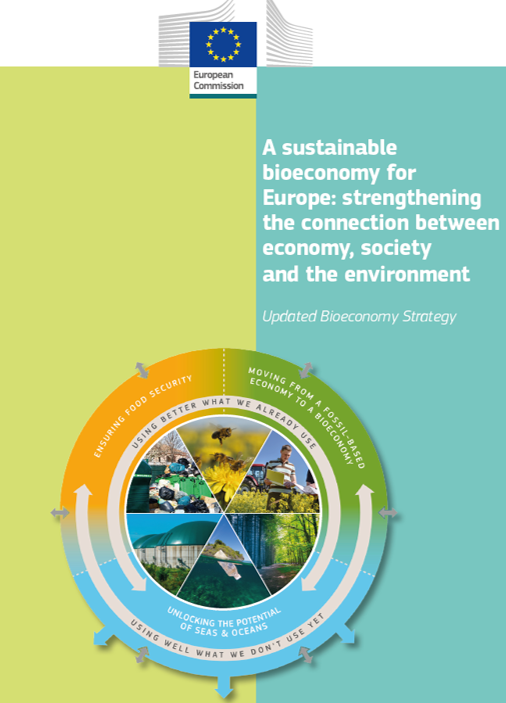1. What is bioeconomy?
This book contains all basic information on bioeconomy.
1.1 Evolution of the term bioeconomy
According to Birner (2018), the origin of the term can be traced back to the late 1960s. Birner (2018) also provides a nice overview of the history of the term and concept of the bioeconomy.
The roots
The origin of the term is often attributed to the Romanian mathematician and economist Nicholas Georgescu-Roegen, who described the concept of a bioeconomy in the mid-1970s. In his almost philosophical essay from 1977 (see literature overview), he analyzes the socio-economic system of the Western world, its relationship to the use of natural resources and the connection with poverty in less developed countries. He draws attention to the fact that biological resources are limited as a basis for economic activities and, in contrast to the classical economic approach, are not equally distributed and available.

The article was strongly influenced by the impressions of the oil price crisis in the 1970s and pointed out even then that humanity must respect the earth's natural carrying capacity, that natural resources are not infinitely available and that the paradigm of growth should no longer be advocated. This was an unconventional approach at the time, as a belief in progress and technology had prevailed since the end of the Second World War, giving humanity a sense of omnipotence. The famous publication by Meadows et al.“The limits to growth” in 1972 marked a turning point, since when the finite nature of natural resources has received more and more attention. Much of Georgescu-Roegen's essay (1977) still seems very relevant from today's perspective.
Significance for EU policy
In the early 2000s, the topic of bioeconomy was placed on the political agenda by the EU Commission (Strategy on Biotechnology 2002). At that time, however, the focus was still more on biotechnology as a “future technology” and not necessarily on achieving various environmental goals. Only later did the concept develop into an approach for solving a variety of future challenges, such as population growth, depletion of fossil resources or environmental pollution. Funding was provided in the 7th Research Framework Program to lay the foundations for a bioeconomy based on scientific findings in various disciplines (agriculture and forestry, energy production, chemistry and biotechnologies).
In addition to the EU member states, other countries also developed their own bioeconomy strategies in the following years.
In addition to the EU member states, other countries also developed their own bioeconomy strategies in the following years.
In the early years, the prevention of climate change through the substitution of fossil fuels dominated the commitment to the bioeconomy. Increasingly, however, concerns were expressed about the competition for land for food production and other environmental impacts of increased biomass use. As a result, research and development has since focused primarily on tapping new sources of biomass from by-products, waste or plants that are not used as food. The economic benefits of biotechnological innovations have also come to the fore. At the Rio+20 UN Assembly in 2012, the green economy was then postulated as a means of achieving sustainable development, with the bioeconomy being seen as part of the green economy.
The EU also published its bioeconomy strategy in 2012. In the revised version of the strategy from 2018, the focus is strongly on sustainability and climate targets that are to be achieved with the help of the bioeconomy in the EU, as well as on modernizing and strengthening the industry. In this sense, the bioeconomy is seen more as an instrument for achieving various EU policy goals (e.g. Green Deal, forestry and agricultural policy, Circular Economy Action Plan).
According to the EU Bioeconomy Monitoring Dashboard, the bioeconomy sectors contributed EUR 657 billion to value added in 2019. This corresponded to 4.7% of European value added.
A current report on the status and future development of European bioeconomy policy can be accessed here.
